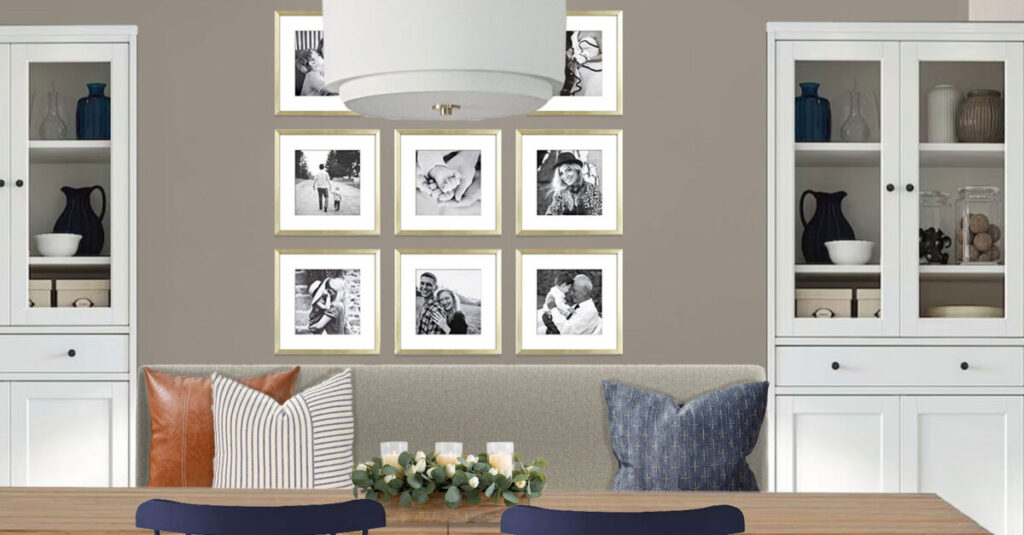Exclusive Interview with Interior Designer and Digital Influencer Julie Jones
How Julie Jones Transitioned from Traditional Interior Design to a Digital Powerhouse, Emphasizing Authenticity and Grounded Living
Have you always considered yourself a creative innovator?
Absolutely. Growing up, my mother was a skilled seamstress who introduced me to sewing at a very young age. By the age of twelve, I was designing my own outfits and exploring drawing as well. I pursued formal education at a design school, but it leaned more towards technical skills rather than purely decorative arts. That suited me perfectly because I love the creative process but also appreciate precision and detail-oriented work.

Breaking into the Interior Design Industry
After earning my degree in 2008, the job market was particularly tough, especially in interior design. I connected with a contractor through a mutual acquaintance and began working on residential projects, even though my initial goal was to focus on hospitality, architecture, or commercial design. Eventually, I was recruited by the same contractor’s design firm, which helped me gain valuable experience in the field.
COVID-19 as a Catalyst for Digital Transformation
The pandemic marked a pivotal shift in my career. In 2020, I started translating my design ideas into digital formats, initially working with local clients. During that period, many people turned to hobbies like painting to cope with lockdowns. A friend in social media noticed my artwork and suggested I showcase it online. I hesitated at first, but he proposed a trade: I’d paint his dog, and in return, he’d help me build my social media presence.
With his guidance, I began discussing interior design on camera, which was initially intimidating. It took months to feel comfortable, but once I posted my first interior design video, I received an overwhelming response-sixty messages on Instagram in a single day! This momentum led me to launch a mini consulting service on TikTok called SOS, inspired by the first question I received on Instagram. That content went viral, significantly expanding my reach.
Balancing Family, Full-Time Work, and Growing a Digital Brand
Managing all these commitments was stressful. I was working around seventy hours a week, juggling my job, family, and my passion for digital content. I realized I needed to make a choice. While I loved my job and my employer, I felt a strong pull toward building my own brand online. After much reflection and prayer, I decided to shift my focus to digital design, which allowed me to become my own boss. This decision paid off, as my business flourished once I dedicated more time to it, including developing my website and engaging directly with clients online.

Overcoming Challenges in Virtual Interior Design
Conducting design consultations remotely presents unique hurdles, especially in communication. Unlike in-person meetings, where you can see a client’s space firsthand, virtual interactions require meticulous documentation and proactive communication. To ensure clarity, I now use detailed questionnaires-something I never did with traditional clients. Additionally, all decisions are made before the virtual meeting, based on the client’s input, allowing us to review and adjust plans together efficiently. This process helps prevent misunderstandings and ensures the client’s vision is accurately realized.
The Purpose Behind My Online Style Quiz
To better understand clients’ preferences, I developed a style quiz for my website. Previously, clients would describe their aesthetic as “modern” or “cozy,” but often their examples didn’t align with their actual tastes. The quiz helps clarify their true style, ensuring that the design solutions I propose genuinely reflect their personalities. It’s a vital tool for bridging the gap between perception and reality in interior styling.
Distinguishing Between Space Planning and Interior Design Services
Space planning is the technical foundation of interior design, focusing on functionality and layout. Every project begins here-assessing the space from a bird’s-eye view to determine optimal furniture sizes, storage solutions, and flow. We produce precise technical drawings to guide the physical arrangement. The next phase involves creating a comprehensive 3D visualization, showcasing everything from color schemes to furniture placement. Clients review these plans via email, providing feedback to ensure every detail aligns with their expectations before implementation.

Launching My Own Home Decor Line
Last fall, I introduced Julie Jones Home, a curated collection of furniture and decor items. The idea was born from a desire to fill gaps in the market-many consumers seek unique, high-quality pieces that aren’t readily available. I personally test every product, sitting on the sofas and examining the craftsmanship to ensure durability and style. The response has been overwhelmingly positive, and sales are exceeding expectations, confirming the demand for thoughtfully curated home essentials.
The Significance of My Growing Social Media Audience
Having over a million followers is a surreal milestone. My journey began simply-sharing snippets of my daily life and design insights via my phone. I intentionally keep my personal life private, focusing instead on providing value to my audience. My goal isn’t fame but to serve others by sharing accessible interior design tips and inspiration. This platform allows me to connect with a broad community while maintaining my family’s privacy and well-being. Ultimately, my purpose remains rooted in humble service and authentic connection.
For more information, visit juliejonesdesigns.com

